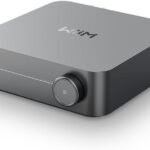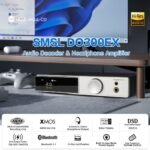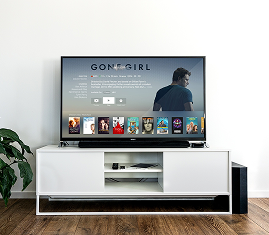How can you get the best sound out of your high-impedance headphones? Well, you’ve come to the right place! This article will cover everything you need to know about driving these headphones properly. So, whether you’re a seasoned audiophile or just starting, we’ve got you covered!
Are you curious about how to drive high-impedance audiophile headphones properly? Well, you’re in for a treat! In the following paragraphs, we’ll dive into the key factors to consider, such as selecting the suitable amplifier, understanding impedance, and optimizing your audio source. By the end of this article, you’ll have all the knowledge and tips you need to take your audio experience to the next level. So, let’s get started!
Understanding High-Impedance Audiophile Headphones
What are high-impedance audiophile headphones?
High-impedance audiophile headphones are a type of headphones that have a higher electrical impedance compared to regular headphones. Impedance refers to the resistance that an electrical circuit presents to the flow of alternating current. In the case of headphones, impedance is measured in Ohms (Ω) and indicates how difficult it is for an audio signal to flow through the headphones.
High-impedance headphones usually have an impedance of 100 Ω or higher, whereas regular headphones typically have an impedance ranging from 16 Ω to 40 Ω. Audiophile headphones’ higher impedance means they require more power to drive them and produce high-quality sound properly.
Why are they different from regular headphones?
The primary difference between high-impedance audiophiles and regular headphones is their electrical characteristics. Regular headphones with lower impedance are designed to be easily driven by portable devices such as smartphones, laptops, and MP3 players. They can deliver sufficient volume and quality of sound without the need for additional amplification.
On the other hand, high-impedance audiophile headphones require more power from an external amplifier to achieve their full potential. The higher impedance allows for better control and damping of the headphone drivers, resulting in improved sound quality, clarity, and overall performance.
Advantages of high-impedance audiophile headphones
High-impedance audiophile headphones offer several advantages over regular headphones. Due to their higher impedance, they often exhibit better frequency response, better detail retrieval, and improved dynamics. The increased power requirements also mean they can handle high volume levels without distorting the sound.
Furthermore, high-impedance headphones are typically built with higher-quality materials and components, resulting in a more durable and robust construction. They often offer better noise isolation and superior comfort, making them suitable for long listening sessions. High-quality audiophile headphones can provide audio enthusiasts with a more immersive and rewarding listening experience.
Choosing the Right Amplifier
Importance of amplifiers in driving high-impedance audiophile headphones
When using high-impedance audiophile headphones, pairing them with a suitable amplifier is crucial. The amplifier acts as a power source and driver for the headphones, supplying the necessary electrical current to produce clear and accurate sound.
Choosing the suitable amplifier is essential because a mismatch between the headphone impedance and the amplifier’s output impedance can result in poor sound quality, inadequate volume levels, and potential damage to the headphones or amplifier.
Matching impedance levels
To ensure optimal performance, it is essential to match the impedance levels of the high-impedance headphones and the amplifier. Ideally, the amplifier’s output impedance should be less than 1/8th of the headphone’s impedance. For example, if you have a pair of 300 Ω headphones, the amplifier’s output impedance should be below 37.5 Ω.
Matching impedance levels minimizes the risk of distortion and ensures that the amplifier can deliver sufficient power to the headphones. It also helps maintain the headphones’ frequency response and impedance-damping characteristics, resulting in accurate and detailed sound reproduction.
Considerations for selecting an amplifier
When selecting an amplifier for high-impedance audiophile headphones, there are a few factors to consider. First, please look for an amplifier with a dedicated headphone output or a high-impedance amplifier. These amplifiers are specifically designed to drive headphones and often provide the necessary power and impedance-matching capabilities.
Also, please pay attention to the amplifier’s power output and ability to deliver clean, undistorted sound at different volume levels. Higher power output does not necessarily guarantee better sound quality, but it ensures that the amplifier can handle the demanding power requirements of high-impedance headphones.
Lastly, could you consider the amplifier’s overall sound signature and features? Some amplifiers offer adjustable gain settings or impedance matching options, allowing you to fine-tune the sound to your preference and optimize the performance with your headphones.
Connecting Headphones to the Amplifier
Using the correct connectors
When connecting high-impedance audiophile headphones to an amplifier, it is essential to use the correct connectors. The most common connector for headphones is the 1/4-inch or 6.35 mm plug, often found on high-end audio equipment, including amplifiers and headphones.
However, some headphones, especially those designed for portable use, may come with a 3.5 mm plug. In such cases, you can use a 3.5 mm to 1/4-inch adapter to connect the headphones to the amplifier.
Using the appropriate connectors ensures a secure and stable connection, minimizing the risk of signal loss, interference, or unwanted noise.
Balanced vs. unbalanced connections
You can use balanced or unbalanced connections when connecting high-impedance audiophile headphones to an amplifier.
Unbalanced connections use a standard stereo connector, where the signal is carried by two wires: one for the left channel and one for the right track. This is the most common type of connection and is suitable for most headphones.
Balanced connections, on the other hand, use a 4-pin XLR or TRS connector to carry the audio signals. This type of connection is often found in professional audio equipment and offers certain advantages, such as better noise rejection and lower crosstalk between the channels. However, it requires both the amplifier and the headphones to support balanced connections.
Benefits of balanced connections
If your high-impedance audiophile headphones and amplifier support balanced connections, there are several benefits to consider.
Balanced connections can provide a cleaner and more accurate sound reproduction, reducing the amount of unwanted noise and interference introduced during the signal transmission. They also allow for longer cable lengths without compromising the audio quality.
Furthermore, balanced connections can improve the channel separation, resulting in a wider soundstage and better imaging. This can enhance the listening experience, especially with well-recorded music and high-quality audio sources.
The more you know, the better the decisions. Thank you for reading!










